Kingdom Animalia Phylum Cnidaria Rank Order | Scientific name Alcyonacea Higher classification Octocorallia Subclass Octocorallia | |
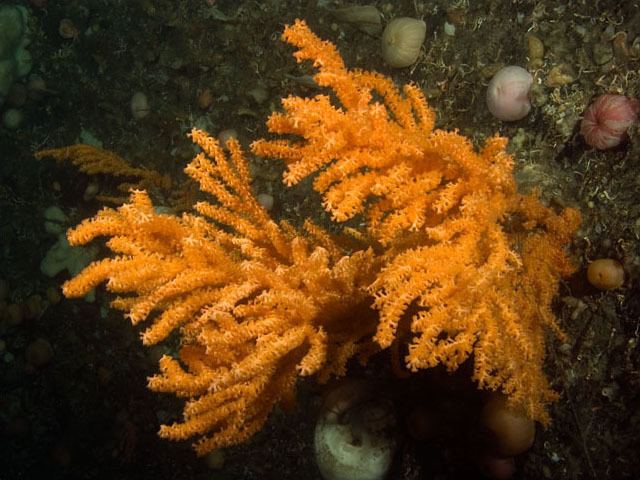 | ||
Lower classifications Sarcophyton, Sinularia, Dendronephthya, Capnella, Alcyoniidae | ||
Keeping photosynthetic gorgonians
Alcyonacea is an order of sessile colonial cnidarians found throughout the oceans of the world, especially in the tropics and subtropics. The name "Gorgonacea" is no longer considered valid and Alcyonacea is now the accepted name for the order. Gorgonians are also known as sea whips and sea fans and are similar to the sea pen, a soft coral. Gorgonians are closely related to coral. Individual tiny polyps form colonies that are normally erect, flattened, branching, and reminiscent of a fan. Others may be whiplike, bushy, or even encrusting. A colony can be several feet high and across but only a few inches thick. They may be brightly coloured, often purple, red, or yellow. Photosynthetic gorgonians can be successfully kept in captive reef aquariums.
Contents
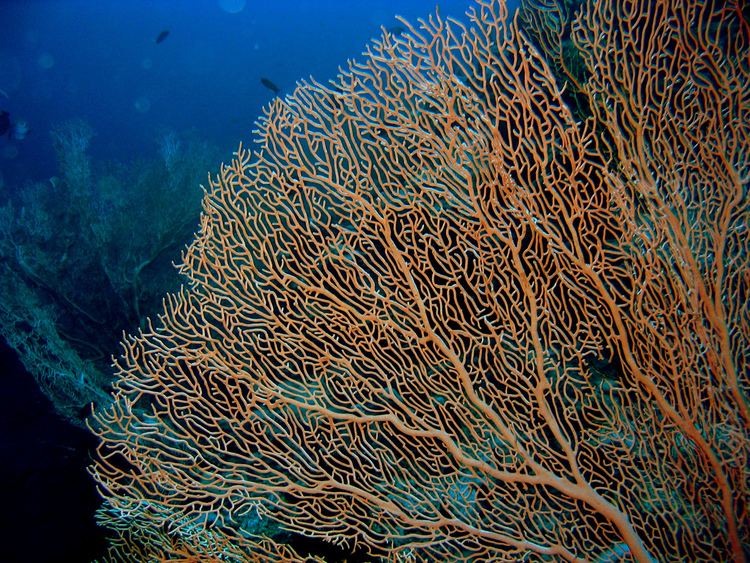
Gorgonians are classified in the phylum Cnidaria, class Anthozoa, alongside the orders Alcyonacea (soft corals) and Pennatulacea (sea pens). There are about 500 different species of gorgonians found in the oceans of the world, but they are particularly abundant in the shallow waters of the western Atlantic, including Florida, Bermuda, and the West Indies.

Tracy morgan gorgonian reefgen
Anatomy
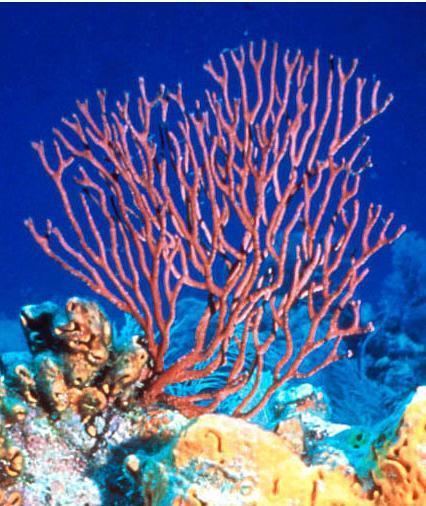
The structure of a gorgonian colony varies. In the suborder Holaxonia, skeletons are formed from a flexible, horny substance called gorgonin. The suborder Scleraxonia variety of gorgonians are supported by a skeleton of tightly grouped calcareous spicules. There are also species which encrust like coral. Most of Holaxonia and Sclerazonia, however, do not attach themselves to a hard substrate. Instead, they anchor themselves in mud or sand.
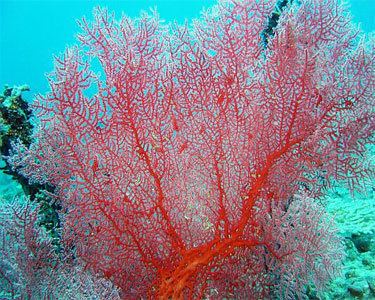
Research has shown that measurements of the gorgonin and calcite within several long-lived species of gorgonians can be useful in paleoclimatology and paleoceanography, as the skeletal growth rate and composition of these species is highly correlated with seasonal and climatic variation.
Ecology
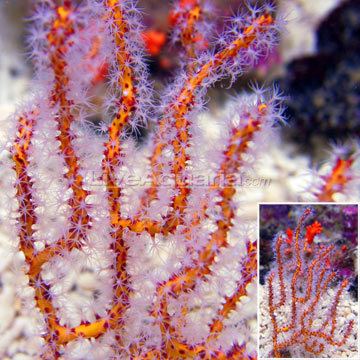
Each gorgonian polyp has eight tentacles which catch plankton and particulate matter that is consumed. This process, called filter feeding, is facilitated when the "fan" is oriented across the prevailing current to maximise water flow to the gorgonian and hence food supply.

Some gorgonians contain algae, or zooxanthellae. This symbiotic relationship assists in giving the gorgonian nutrition via photosynthesis. Gorgonians possessing zooxanthellae are usually characterized by brownish polyps.
Gorgonians are found primarily in shallow waters, though some have been found at depths of several thousand feet. The size, shape, and appearance of gorgonians can be correlated with their location. The more fan-shaped and flexible gorgonians tend to populate shallower areas with strong currents, while the taller, thinner, and stiffer gorgonians can be found in deeper, calmer waters.
Other fauna, such as hydrozoa, bryozoa, and brittle stars, are known to dwell within the branches of gorgonian colonies. The pygmy seahorse not only makes certain species of gorgonians its home, but closely resembles its host and is thus well camouflaged. Two species of pygmy seahorse, Hippocampus bargibanti and Hippocampus denise, are obligate residents on gorgonians. H. bargibanti is limited to two species in a single genus.
Gorgonians produce unusual organic compounds in their tissues, particularly diterpenes, and some of these are important candidates for new drugs. These compounds may be part of the chemical defenses produced by gorgonians to render their tissue distasteful to potential predators. Despite these chemical defenses, the tissues of gorgonians are prey for flamingo tongue snails of the genus Cyphoma, the fireworm Hermodice sp., and their polyps are food for butterflyfishes
